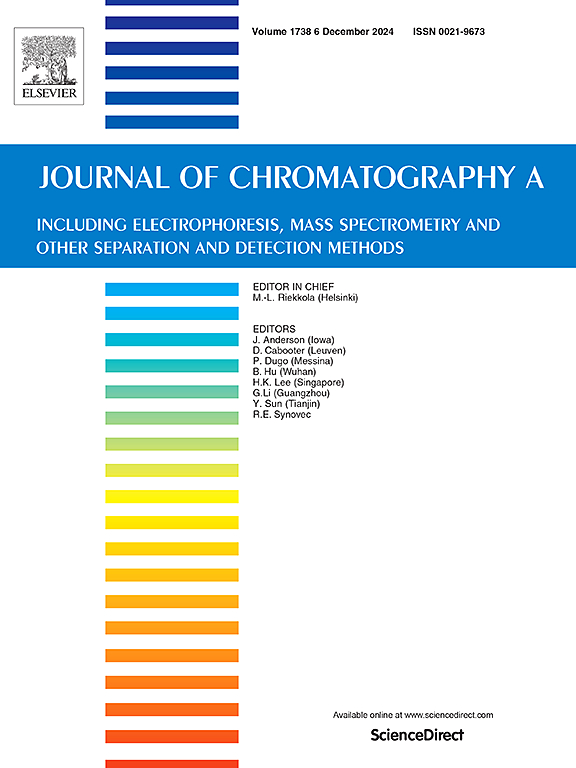An unconventional separation method of α-Terpineol from its isomer 1,8-Cineole via in situ-association formation of deep eutectic solvent and machine learning
IF 3.8
2区 化学
Q1 BIOCHEMICAL RESEARCH METHODS
引用次数: 0
Abstract
α-Terpineol and 1,8-cineole are two important compounds in essential oils. This study developed an efficient method to recover α-terpineol from model oil (MO) based on association extraction by in situ formations of deep eutectic solvent (DES) between α-terpineol and some quaternary ammonium salts (QASs) by hydrogen-bond (HB) interaction. Such interaction could be broken almost completely by the introduction of water, due to the stronger HB interaction between water and QASs, which could release α-terpineol by liquid-liquid separation and save the organic solvents consumption. QASs were screened by gaussian energy calculation and experimental verification. Subsequently, the effect of physicochemical properties of the quaternary ammonium salts on the weak interaction between QASs and α-Terpineol was also screened using random forests model. Tetrabutylammonium chloride (TBAC) was proved to form DES with α-terpineol but not with 1,8-cineole, which was proved by FT-IR and 1H nuclear magnetic resonance (1H NMR) spectroscopy. After response surface methodology (RSM) and Genetic Algorithm-Back Propagation (GA-BP) neural network optimization, the distribution ratio and selectivity of α-terpineol to 1,8-cineole could reach a high value of 29.6 and 42.2. The α-terpineol could achieve a purity up to 99.6 % with a recovery of 88.8 % by the two-step back-extractions using n-hexane and water. Furthermore, camphor leaf essential oil was used to demonstrate the reliability of the method for further application. In this separation process, all reagents including organic salt, n-hexane and water could be recovered and reused. It provides an alternative and promising method for the economical and green treatment of essential oils.
求助全文
约1分钟内获得全文
求助全文
来源期刊

Journal of Chromatography A
化学-分析化学
CiteScore
7.90
自引率
14.60%
发文量
742
审稿时长
45 days
期刊介绍:
The Journal of Chromatography A provides a forum for the publication of original research and critical reviews on all aspects of fundamental and applied separation science. The scope of the journal includes chromatography and related techniques, electromigration techniques (e.g. electrophoresis, electrochromatography), hyphenated and other multi-dimensional techniques, sample preparation, and detection methods such as mass spectrometry. Contributions consist mainly of research papers dealing with the theory of separation methods, instrumental developments and analytical and preparative applications of general interest.
 求助内容:
求助内容: 应助结果提醒方式:
应助结果提醒方式:


